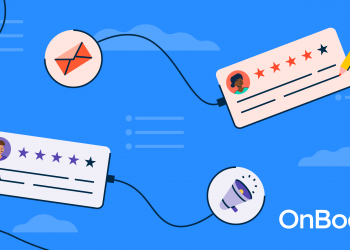Gone are the days when social media was a new concept.
Nowadays, browsing social media sites is often the first thing we do when we pick up our smartphones in the morning. While social media has its downsides, brands can use the concept of connecting with their audiences in ways they never thought possible.
Usually, this concept is through social media marketing (SMM).
What is social media marketing?
Social media marketing (SMM) is the use of social media platforms to build a company’s brand, grow website traffic, and increase sales while connecting with customers.
Social media marketing involves publishing content to social media profiles, listening to and engaging with followers, and running social media ads with social media marketing software. Typically this is done using social media management software to schedule and publish various posts, maintain an online presence, and better manage workflows.
A company has its pick of social network platforms to engage with existing customers and find new ones while also using built-in analytics to track what’s working and what’s not.
Social media marketing pillars
There are five key pillars of social media marketing. Move your brand through all five pillars to ensure nothing falls through the cracks.
1. Strategy
Before you can roll up your sleeves and start taking advantage of everything social media has to offer, you need to look at the big picture and cultivate a social media strategy.
This includes:
- Determining the business goals you’re looking to achieve. For instance, maybe you want to expand brand awareness, drive sales, or get an increase in website traffic. Creating a social media strategy helps you generate engagement around your brand and its products while creating a community and building customer trust.
- Choosing the right social media channels. Whether you pick Facebook, Twitter, Instagram, YouTube, or TikTok, the strategy will look different on each site. Consider which social network platform your target audience uses most.
- Choosing the type of content to share. Is your brand going to opt for images, videos, or links? Will it be entertaining or educational? Remember that what you decide doesn’t have to be the strategy forever. Switch things up if the social media content isn’t working how you thought it would!
“Some of the worst advice I hear is, ‘Start creating and posting content, and your page will grow naturally.’ While this allows marketers and social media managers to experiment on their brand’s social presence, there should always be a clear objective.”
Carol Bustos
Group Digital Strategist, Healthcare Consultancy Group
2. Planning
Once a strategy is in place, it’s time to plan and publish! This means having a consistent presence on social media that aligns with the brand. Doing so helps both existing and potential customers discover you. It’s important to plan content ahead of time instead of creating and publishing simultaneously.
Publishing starts with a click as you share a blog post, a video, or an image on a social media platform. Don’t forget to take timing and frequency into consideration! For instance, you likely don’t want to have social media posts that go live in the middle of the night. You also don’t want to share 20 tweets in one day.
3. Engagement
Over time, your business and its social media following will grow as you continue publishing content. This also means conversations about your brand will increase, including people commenting on your posts, tagging you in posts from other brands, replying to Tweets, or messaging you directly.
It’s also possible customers are talking about your brand without tagging you. So, listening to, monitoring, and engaging with as many conversations as possible is essential. As you go about social engagement, keep an eye out for positive conversations but also negative ones. If a customer is taking to social media to complain about your product or services, take the opportunity to correct the situation or offer support.
“Social media marketing is a conversation with a mass audience. Imagine you’re giving a presentation to a room full of people on your brand. You’d take that opportunity to educate, entertain, and demonstrate what your brand is all about.”
Vincent Benedict
Marketing Coordinator at Certified Sports Guaranty
4. Analytics
Next up are analytics and reporting, which take you into a deep dive of your data so you can see how your social posts are performing. Some social platforms, like Twitter Analytics, set this data up for you, so it’s easy to see what’s working and what needs to be tweaked.
Some metrics that you can track are:
- Engagement. Clicks, comments, likes, and replies on your posts. Some platforms go even further with specific engagement types. For instance, TikTok and Instagram include “saved” posts.
- Reach. The number of users who have seen your most recent content.
- Impressions. The number of times a post from your profile or page was seen by users. Impressions count whether the post was clicked on or not.
- Mentions. The number of times your profile’s name has been mentioned in posts. Sometimes called “tags”, they often begin with the @ symbol.
- Followers. The number of people who have clicked the Follow button on your account to see your content and posts regularly.
- Video views. On TikTok, Instagram, and Snapchat, you can see how many views your videos have received.
- Profile visits. The number of people who have visited your social profile or main page.
- Shares. The number of times users reshare your posts to their network.
These metrics can answer questions like:
- Are we reaching more people this month vs. last month?
- How many positive mentions did we get this month?
- Are people using our brand’s hashtags on social posts?
- Are we on track to hit a certain number of followers by the end of the year?
Carol Bustos, Group Digital Strategist at Healthcare Consultancy Group shares more about the importance of using analytics within a social media marketing strategy, “At conferences or networking events, I’d hear at least one marketer say they neglect looking at metrics because the task often takes the backseat. I’m fully aware of the multitude of daily tasks that an SMM has to juggle and that data analysis tends to become the least of their priorities.
“However, without looking at data, it would be impossible to assess KPIs, determine budgets, set goals, and craft a strategy to achieve those goals.”
Carol Bustos
Group Digital Strategist at Healthcare Consultancy Group
It’s common for social media marketers to utilize social media analytics software to track progress toward specific goals.
5. Advertising
Over time, your brand may reach a point where it has the funds to grow its marketing efforts to include social media advertising. These ads make it possible to reach a wider audience than those already following your accounts.
These ads can also be cultivated based on who you want to see them, and you can create specific ads based on interests, behaviors, demographics, and location. To assist in these efforts, businesses often turn to social media advertising software to manage, buy, and place ads on specific platforms.
Anthony Astacio, Paid Social Manager at Quigley Simpson, shares more about the importance of knowing which platform is best for your brand. “Choosing the right platform can be determined in different ways. The first step is knowing what budget you have. Usually, more budget means more flexibility and opportunity to use multiple platforms. You also need to know what kind of creatives you have (typically videos and images) and your campaign’s ultimate goal.”
“If you’ve never run ads on social media before, it’s best to test multiple platforms and see where your audience is and how they interact with your ads. Find out if they visit your site after seeing your ads and eventually make a purchase.”
Anthony Astacio
Paid Social Manager, Quigley Simpson
Astacio continues to say,” Find out if they visit your site after seeing your ads and eventually make a purchase. You may learn that people watch your videos more on TikTok, more people visit your website from Instagram, but most purchases come from Facebook ads. Using this data will help advertisers learn where they should put their money once they’ve understood the goals they’re aiming to accomplish.”
Benefits of social media marketing
Putting in the time and effort to do SMM correctly can lead to several benefits. Social media marketing can:
- Increase brand awareness: Unsure if social media marketing is a tactic you want to spend time on? Think about the thousands, and even millions, of people who have active social media accounts. You don’t want to miss out on reaching them and creating a presence for your brand and its services.
- Humanize a business: As you build a social media profile, your posts and interactions with users will show customers that your brand and persona are approachable and trustworthy. Over time, your audience will grow familiar with your brand and form a connection.
- Drive traffic: You’ve got your website link in your profile’s bio. You share links to blog posts with your followers. You run compelling ads. All these actions combined on social media sites will increase traffic to your company’s website, making it easier to turn visitors into customers.
- Build a community: SMM shouldn’t only be about selling and promoting your products and services. Successful brands turn to social media platforms to connect, engage, and build a community within their industry or niche.
- Enhance relationships with customers: Social media creates indirect and direct lines of communication with followers, so it’s possible to network, collect feedback, hold discussions, and connect with them as individuals.
- Generate more leads and conversions: When done well, your efforts on social media, especially on platforms like Twitter, Facebook, and Instagram, help generate leads. You’ll likely build a better database of prospects that convert into customers when you mix consistent posting and engaging with followers with other strategies, like video content marketing and email opt-ins.
- Build relationships at a low cost: SMM is ideal for small businesses and brands on a budget. It’s usually free to create a profile, grow a social media presence, and engage with your audience.
- Keep tabs on the competition: Whether it’s learning from their tactics, the products they post about, or their campaigns, social media marketing provides a competitive analysis of competing brands and how they interact with their followers and subscribers. You can also note what’s working and not working for competing brands and see what you can do to better stand out from the crowd.
Building a social media marketing plan
When your team is ready to build a social media marketing program from the ground up, follow these specific steps to ensure its best chance of success.
Decide on goals and objectives
The social media marketing goals and objectives need to be clear from the get-go. They can be simple and straightforward, like “be consistent and post once a day for a month” or “engage with at least two followers daily”.
These goals will help your team find their rhythm and cadence, eventually leading to insights into what works (and what doesn’t). From there, you can get more specific with the objectives within your social media marketing strategy, like “increase follower count by 10%”.
Tip: Consider the SMART goal framework for your social media marketing program.
Find your target audience
It’s best to learn as much about your audience as possible. You’ll also want to get specific in order to craft the most relevant content possible. Try creating an audience persona using factors like age, language, location, average income, and potential pain points. Ask yourself who you want to reach and how you’d classify them as a group.
Your persona should also answer questions about your audience like:
- What platforms do they use?
- How often do they use these platforms?
- What content do they like best?
- Who else are they following?
Once you have these answers, you’ll be able to determine the type of content that attracts the kind of followers and customers you’re looking to gain.
Research the competition
Chances are good your competitors are already on social media with a well-thought-out strategy. Now is the time to see what they’re up to just by taking a look at their presence and how they’ve been performing. Think about running a competitor analysis to see what strategies are or aren’t working for them.
Doing so may open up an opportunity or two for your team to take advantage of. For example, if one of your competitors leans into Facebook but doesn’t have much of a presence on Instagram or Twitter, that’s where you should be.
Choose a platform
Next, decide which social media networks to focus your efforts on. Take into account the data you’ve gathered about your target audience, in addition to platforms that are popular in your industry, and the bandwidth your team has.
Only create profiles and develop an SMM strategy on the number of platforms you can actively keep up with. Otherwise, you won’t have the impact or success you’re looking for. Consider starting small with one platform and going from there.
Create a content strategy
You’ve likely heard the phrase “content is king”. Content reigns supreme, so consider your content creation initiatives. You’ll want to post diverse content, employing formats like articles, blogs, videos, and images, that your audience will find interesting and helpful. Then, you’ll want to figure out the best way to go about social media promotion.
The type of content depends on your brand and its services, but the content strategy you build may include:
- Data and insights
- Targeted campaigns, like contests, polls, surveys
- Quick tips and how-tos
- Articles and blogs that are SEO-focused
- Industry news
- Announcements and updates
- Teasers for new products or services
- Holiday-related sales or giveaways
Align with your executive and legal teams early
The essence of social media is to be social, but many brand accounts seem one-sided. It isn’t because they don’t see the value of having conversations with their followers, but because they can’t. This is especially true for industries like pharma, healthcare, education, and politics. While working on brand strategies for social, marketing teams need to align with their leaders and legal teams early to agree upon a set of guidelines – and guardrails – for what their social team can do and/or respond to online.
Take advantage of software
The process of social media marketing isn’t a small feat – take advantage of tools that make it a little easier! To ensure all of your hard work and dedication is as successful as possible, try adding some of these tools to your tech stack:
- Competitive intelligence software to assist in your competitor analysis of what other brands are doing on social media. Social media marketers can use these tools to gather insights about a competitor’s social media strategy, as well as their strategy surrounding content and digital advertising.
- Content creation software to help design pieces for marketing initiatives. These tools often assist with content planning, the actual creation of marketing content, or both.
- Graphic design software to make eye-catching and visually appealing images to share with your audience. These images can accompany text posts or be stand-alone posts on image-centric platforms like Instagram.
- Social media monitoring software tracks, listens to, and gathers relevant content across social media. These tools can also identify trends within an industry, track your competitors, and better understand customer sentiment. Social media marketers use monitoring software to personalize their content based on demographics and respond to positive and negative comments.
- Social media suites analyze, manage, and monitor information on multiple social media accounts. Social media marketing teams turn to these tools to automate posts, engage with followers, and collect information across all social channels.
Adjust as needed
Since most platforms come with analytics for SMM teams, take advantage of what they show you. Use this data to identify the posts that get the most engagement, determine whether you’re getting more followers, and further analyze your audience’s demographics. Do more of what works and scrap or tweak what doesn’t.
How to choose the right platform
Selecting the social media platform that will best support your business is key. Just like every marketing team has specific needs and expectations, every social media platform provides different functionality and offers unique opportunities.
With over 2.93 billion estimated monthly active users, Facebook is the largest, most established social media platform. Since its launch in 2004 by founders Mark Zuckerberg, Andrew McCollum, Eduardo Saverin, Dustin Moskovitz, and Chris Hughes, it’s become a helpful tool for business-to-consumer companies. Facebook Ads, or Facebook for Business, has advanced advertising features for users and is also extremely popular.
Brands use Facebook Pages to post updates, share recent content, announce new products, and engage with customers. Because “fans” of pages can post messages, Facebook gives brands an opportunity to respond publicly and display their commitment to their customers.
The audience on Facebook is an even mix of Gen X (users born from 1965 to 1980) and millennials (users born between 1981 and 1996).
Twitter, a platform meant for short messages and back-and-forth interactions, is an excellent tool for professionals just diving into their social media marketing strategy. With 330 million estimated monthly active users, it’s best for public relations, customer service, and community building. Founded in 2006 by Jack Dorsey, Noah Glass, Evan Williams, and Biz Stone, its audience is primarily millennials.
The key to Twitter is engaging and interacting with your target audience. Businesses and organizations use Twitter to share information and content, drive engagement, network, increase brand awareness, and manage their reputation. Additionally, tweeting about trending hashtags is an easy and effective way to increase visibility.
Instagram is a social media platform primarily used to share images and videos. It took the social media world by storm when it was founded in 2010 by Kevin Systrom and Mike Krieger.
Since it’s best for high-quality images and videos, user-generated content, advertising, and influencer marketing, it’s where many brands go for their advertising efforts. With over 1.5 billion monthly active users and an audience of mostly millennials, Insta is an absolute must to factor into your strategy.
Once your business has an Instagram account, be sure to switch it to an Instagram business profile, which requires your organization to have a Facebook page. Instagram will then import the data from your Facebook page. A business profile also makes it easier for your audience to contact you, simplifies content promotion, and provides more in-depth insights.
Instagram is also perfect for smaller brands, specifically online stores and e-commerce websites. Many e-commerce stores take advantage of Instagram to increase traffic to their online store, improving sales.
TikTok
Looking to make a big splash with a tiny video? Consider creating a strategy centered around TikTok. With over 1 billion monthly users, TikTok is great for boosting brand awareness by posting creative video content.
Founded in 2016 by Zhang Yiming, its audience is mostly Gen Z and millennials. Even though it’s relatively new to the scene, it’s one of the fastest-growing social media apps in the world, even surpassing Google as the most visited internet site – likely because it acts as a unique search engine for various topics.
73%
of users feel a deeper connection to brands they interact with on TikTok vs. other platforms.
Source: Statista
Think of LinkedIn as social media with a professional twist. With 310 million monthly users, it’s the only platform with clearly defined users: working professionals looking to grow their network. LinkedIn’s audience ranges from baby boomers (users born in 1946 – 1964), Gen X, and millennials. It’s ideal for business-to-business relationships, business development, and social selling.
As with all social media platforms, shared content on LinkedIn should match the audience. Valuable pieces like educational blog posts, eBooks, and how-to guides are excellent choices for your account. And don’t forget about one of LinkedIn’s biggest user groups: job seekers. Sharing your company’s open roles attracts those looking for a new opportunity. Even if they don’t end up applying, your intriguing content will hopefully turn them into a follower.
LinkedIn was founded in 2002 by Reid Hoffman, Jean-Luc Vaillant, Konstantin Guericke, Eric Ly, and Allen Blue.
YouTube
YouTube is an often underutilized marketing platform. Founded in 2005 by Jawed Karim, Chad Hurley, and Steve Chen, it’s ideal for building brand awareness by posting your company’s long-form entertainment or how-to videos.
Its audience is primarily millennials, but with 2.2 billion monthly users, it has a wide audience across gender and age groups. Not only is it an incredibly popular platform, but its users also tend to stay on it longer because it features primarily long-form content. This makes YouTube the perfect platform for sharing educational content. Marketers can present content uniquely so viewers consume and share it quickly and easily.
Snapchat
Last but not least, Snapchat. When it was launched in 2011 by Evan Spiegel, Bobby Murphy, and Reggie Brown, it introduced shareable photos and videos that would expire after 24 hours. Its audience is primarily Gen Z (users born between 1997 and 2012), and the platform is great for building brand awareness through advertising.
One thing to note about Snapchat is that there isn’t much competition in terms of social media marketing. While it has gained popularity among brands, it’s not nearly as congested as the major platforms like Facebook and Twitter.
More than just a buzzword
You may think mastering social media is easy – think again.
Creating a winning strategy doesn’t happen overnight. It takes a ton of planning, calculating, and finding new ways to connect and resonate with your customers. Remember, what works on one platform may not bring success on another, so get ready to pivot as fast as your audience needs.
Never miss another brand mention again! Find the best hashtag monitoring software to learn more about how users are engaging with your social media posts.
Source by learn.g2.com











